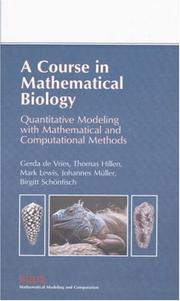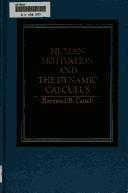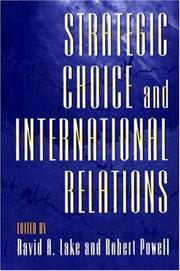Book
ISBN: 9781032652221 9781466589834 9780429168246 Year: 2023 Publisher: Boca Raton : CRC Press, Taylor & Francis Group,
Abstract | Keywords | Export | Availability | Bookmark
 Loading...
Loading...Choose an application
- Reference Manager
- EndNote
- RefWorks (Direct export to RefWorks)
This book provides a comprehensive look at the science, methods, designs, and limitations of nonimaging optics. It begins with an in-depth discussion on thermodynamically efficient optical designs and how they improve the performance and cost effectiveness of solar concentrating and illumination systems. It then moves into limits to concentration, imaging devices and their limitations, and the theory of furnaces and its applications to optical design. Numerous design methods are discussed in detail followed by chapters of estimating the performance of a nonimaging design and pushing their limits of concentration. Exercises and worked examples are included throughout.
Solar collectors --- Light --- Optical engineering. --- Reflectors, Lighting. --- Geometrical optics. --- Capteurs solaires. --- Réflecteurs (optique) --- Ingénierie. --- Optique géométrique. --- Optique --- Lumière --- Mathematical model --- Transmission. --- Mathematical models. --- Mathematics. --- Instruments. --- Propagation.
Book
ISBN: 9782840540465 2840540460 Year: 1996 Publisher: Paris : Polytechnica,
Abstract | Keywords | Export | Availability | Bookmark
 Loading...
Loading...Choose an application
- Reference Manager
- EndNote
- RefWorks (Direct export to RefWorks)
Homeopathy. --- Homeopathy --- Pharmaceutical chemistry --- Solutions (Pharmacy) --- Treatment Outcome. --- Principe de l'infinitésimal (homéopathie) --- Homéopathie --- Chimie pharmaceutique --- Solutions (pharmacie) --- Statistics --- Attenuations, dilutions, and potencies. --- Mathematical model --- statistiques. --- Modèles mathématiques.

ISBN: 0898716128 9780898716122 Year: 2006 Publisher: Philadelphia :- : Society for industrial and applied mathematics,
Abstract | Keywords | Export | Availability | Bookmark
 Loading...
Loading...Choose an application
- Reference Manager
- EndNote
- RefWorks (Direct export to RefWorks)
"Intended for upper level undergraduate students in mathematics or similar quantitative sciences, A Course in Mathematical Biology: Quantitative Modeling with Mathematical and Computational Methods is also appropriate for beginning graduate students in biology, medicine, ecology, and other sciences. It will also be of interest to researchers entering the field of mathematical biology." -- Jacket.
Biology --- Mathematical models. --- Biology. --- Models, Theoretical. --- Biological models --- Biomathematics --- Models, Theoretical --- Experimental Model --- Experimental Models --- Mathematical Model --- Model, Experimental --- Models (Theoretical) --- Models, Experimental --- Models, Theoretic --- Theoretical Study --- Mathematical Models --- Model (Theoretical) --- Model, Mathematical --- Model, Theoretical --- Models, Mathematical --- Studies, Theoretical --- Study, Theoretical --- Theoretical Model --- Theoretical Models --- Theoretical Studies --- Computer Simulation --- Systems Theory --- Mathematical models

ISBN: 0030720095 Year: 1985 Publisher: New York Praeger
Abstract | Keywords | Export | Availability | Bookmark
 Loading...
Loading...Choose an application
- Reference Manager
- EndNote
- RefWorks (Direct export to RefWorks)
Models, Theoretical. --- Motivation. --- Disincentives --- Incentives --- Disincentive --- Incentive --- Drive --- Expectations --- Expectation --- Motivations --- Experimental Model --- Experimental Models --- Mathematical Model --- Model, Experimental --- Models (Theoretical) --- Models, Experimental --- Models, Theoretic --- Theoretical Study --- Mathematical Models --- Model (Theoretical) --- Model, Mathematical --- Model, Theoretical --- Models, Mathematical --- Studies, Theoretical --- Study, Theoretical --- Theoretical Model --- Theoretical Models --- Theoretical Studies --- Computer Simulation --- Systems Theory --- Models, Theoretical --- Motivation
Book
ISBN: 1789550254 9781789550252 9781789550269 Year: 2019 Publisher: London Legend Press
Abstract | Keywords | Export | Availability | Bookmark
 Loading...
Loading...Choose an application
- Reference Manager
- EndNote
- RefWorks (Direct export to RefWorks)
There is much to consider when starting a business. Knowing what to do first, whether you have a concept that works for you, what resources to access and how to get started can be overwhelming and seemingly-complicated.
Business --- Mathematical model. --- Trade --- Economics --- Management --- Commerce --- Industrial management --- New business enterprises. --- Entrepreneurship. --- Entrepreneur --- Intrapreneur --- Capitalism --- Business incubators --- Business starts --- Development stage enterprises --- How to start a business --- New companies --- Start-up business enterprises --- Start-up companies --- Start-ups (Business enterprises) --- Starting a business --- Startups (Business enterprises) --- Business enterprises --- E-books --- New business enterprises --- Entrepreneurship
Book
ISBN: 0128156538 9780128156544 0128156546 9780128156537 Year: 2020 Publisher: London, United Kingdom : Academic Press,
Abstract | Keywords | Export | Availability | Bookmark
 Loading...
Loading...Choose an application
- Reference Manager
- EndNote
- RefWorks (Direct export to RefWorks)
Hemodynamics ǂx Mathematical models. --- Hemodynamics. --- Models, Theoretical. --- Hemodynamics --- Mathematical models. --- Experimental Model --- Experimental Models --- Mathematical Model --- Model, Experimental --- Models (Theoretical) --- Models, Experimental --- Models, Theoretic --- Theoretical Study --- Mathematical Models --- Model (Theoretical) --- Model, Mathematical --- Model, Theoretical --- Models, Mathematical --- Studies, Theoretical --- Study, Theoretical --- Theoretical Model --- Theoretical Models --- Theoretical Studies --- Computer Simulation --- Systems Theory --- Hemodynamic --- Neurovascular Coupling --- Blood Circulation --- Blood --- Cardiac output --- Hydrodynamics --- Circulation
Periodical
ISSN: 25631926 Year: 2020 Publisher: London, Ontario, Canada : Western Libraries, University of Western Ontario,
Abstract | Keywords | Export | Availability | Bookmark
 Loading...
Loading...Choose an application
- Reference Manager
- EndNote
- RefWorks (Direct export to RefWorks)
applied mathematics --- differential equations --- mathematical models --- Engineering --- Models, Theoretical --- Experimental Model --- Experimental Models --- Mathematical Model --- Model, Experimental --- Models (Theoretical) --- Models, Experimental --- Models, Theoretic --- Theoretical Study --- Mathematical Models --- Model (Theoretical) --- Model, Mathematical --- Model, Theoretical --- Models, Mathematical --- Studies, Theoretical --- Study, Theoretical --- Theoretical Model --- Theoretical Models --- Theoretical Studies --- Computer Simulation --- Systems Theory --- Engineerings --- Engineering. --- Construction --- Industrial arts --- Technology --- Models, Theoretical.

ISBN: 0691213097 0691026971 069102698X Year: 1999 Publisher: Princeton University Press
Abstract | Keywords | Export | Availability | Bookmark
 Loading...
Loading...Choose an application
- Reference Manager
- EndNote
- RefWorks (Direct export to RefWorks)
The strategic-choice approach has a long pedigree in international relations. In an area often rent by competing methodologies, editors David A. Lake and Robert Powell take the best of accepted and contested knowledge among many theories. With the contributors to this volume, they offer a unifying perspective, which begins with a simple insight: students of international relations want to explain the choices actors make--whether these actors be states, parties, ethnic groups, companies, leaders, or individuals. This synthesis offers three new benefits: first, the strategic interaction of actors is the unit of analysis, rather than particular states or policies; second, these interactions are now usefully organized into analytic schemes, on which conceptual experiments may be based; and third, a set of methodological "bets" is then made about the most productive ways to analyze the interactions. Together, these elements allow the pragmatic application of theories that may apply to a myriad of particular cases, such as individuals protesting environmental degradation, governments seeking to control nuclear weapons, or the United Nations attempting to mobilize member states for international peacekeeping. Besides the editors, the six contributors to this book, all distinguished scholars of international relations, are Jeffry A. Frieden, James D. Morrow, Ronald Rogowski, Peter Gourevitch, Miles Kahler, and Arthur A. Stein. Their work is an invaluable introduction for scholars and students of international relations, economists, and government decision-makers.
Strategic planning. --- International relations. --- Axelrod, Robert. --- Bueno de Mesquita, Bruce. --- Chicken Game. --- Depew, David J. --- Fearon, James. --- Frieden, Jeffry. --- Hirshleifer, Jack. --- Keohane, Robert O. --- Lake, David. --- Lamarckism. --- Morrow, James. --- Rogowski, Ronald. --- aggregation of preferences. --- constructivist theories. --- deterrents: alliances as. --- ecology, organizational. --- hegemonic stability theory. --- linkage in bargaining. --- mathematical model. --- multiple-veto systems. --- reversion point. --- scale of units. --- screening.
Book
ISBN: 3540067434 3642878121 3642878105 Year: 1975 Publisher: Berlin Springer
Abstract | Keywords | Export | Availability | Bookmark
 Loading...
Loading...Choose an application
- Reference Manager
- EndNote
- RefWorks (Direct export to RefWorks)
General biophysics --- General ecology and biosociology --- Biophysics. --- Ecology. --- Models, Theoretical. --- Environmental Science --- Bionomics --- Ecologies --- Environmental Sciences --- Science, Environmental --- Sciences, Environmental --- Environmental Psychology --- Conservation of Natural Resources --- Environmental Health --- Ecosystem --- Mechanobiology --- Experimental Model --- Experimental Models --- Mathematical Model --- Model, Experimental --- Models (Theoretical) --- Models, Experimental --- Models, Theoretic --- Theoretical Study --- Mathematical Models --- Model (Theoretical) --- Model, Mathematical --- Model, Theoretical --- Models, Mathematical --- Studies, Theoretical --- Study, Theoretical --- Theoretical Model --- Theoretical Models --- Theoretical Studies --- Computer Simulation --- Systems Theory --- Biophysics --- Ecology --- Models, Theoretical
Book
ISBN: 3540068961 364296222X 3642962203 0387068961 9780387068961 9783540068969 Year: 1974 Publisher: Berlin Springer
Abstract | Keywords | Export | Availability | Bookmark
 Loading...
Loading...Choose an application
- Reference Manager
- EndNote
- RefWorks (Direct export to RefWorks)
Biomathematics. Biometry. Biostatistics --- Phytopathology. Phytoparasitology --- Epidemiology. --- Models, Theoretical. --- Plant Diseases. --- Disease, Plant --- Diseases, Plant --- Plant Disease --- Disease --- epidemiology --- Experimental Model --- Experimental Models --- Mathematical Model --- Model, Experimental --- Models (Theoretical) --- Models, Experimental --- Models, Theoretic --- Theoretical Study --- Mathematical Models --- Model (Theoretical) --- Model, Mathematical --- Model, Theoretical --- Models, Mathematical --- Studies, Theoretical --- Study, Theoretical --- Theoretical Model --- Theoretical Models --- Theoretical Studies --- Computer Simulation --- Systems Theory --- Social Epidemiology --- Epidemiologies, Social --- Epidemiology, Social --- Social Epidemiologies --- Epidemiology --- Models, Theoretical --- Plant Diseases --- Plant diseases - Epidemiology --- Epidemiology - Mathematical models

 Search
Search Feedback
Feedback About UniCat
About UniCat  Help
Help News
News